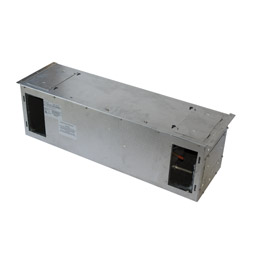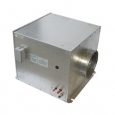Commercial wine cellars are storage facilities specifically designed for storing and aging large quantities of wines. Like any other type of wine cellar, it needs to have effective insulation, an airtight seal, artificial humidifiers, and cooling systems in order to provide the best possible environment for preserving and protecting wines for a prolonged period of time.
Wine cellar cooling units are an integral part of wine’s aging process. These cooling systems ensure that temperature and humidity levels stay
within the appropriate range. A wine cellar refrigeration system is different from a regular air conditioning unit, in that it is specifically engineered to regulate climate conditions inside the wine storage room.
Cooling systems for wine cellars come in different types and sizes. Each of which has its own functionality and advantages. Essential factors to consider when choosing the proper wine cellar cooling units are location and size of the commercial wine storage room, the number of wine bottles, level of insulation, and the variety of racking system used.
Considering the amount of wine stock in its inventory and the scope of its storage area, a commercial wine cellar requires a refrigeration system that has a powerful cooling capacity in order to efficiently maintain the required level of temperature and humidity within the storage facility.
Commercial wine cellar cooling units are designed for maximum wine storage with minimal fluctuations. The two primary types of wine cellar cooling units ideal for commercial wine storage are split system wine cooling units and ducted self-contained refrigeration systems.
A split system wine cooling unit is divided into two components. One unit contains the evaporator coil, while the other one includes the compressor, condensing fan and coil. Because of its split feature, this cooling system offers various installation and placement options.
Split systems provide a quiescent and unobtrusive atmosphere. This is because the condenser is placed in an adjacent room or outdoors, which effectively dissipates noise and heat. The evaporator coil is installed inside the wine storage room. It is responsible for introducing cold air into the wine cellar and regulating humidity levels.
Split system cooling units can either be ducted or ductless. Ducted split systems are connected via front and rear ducting kits. Front ducting kits bring in cold air into the room, while rear ducting kits exhaust warm air away from the cellar. Ductless split systems use copper lines to connect the evaporator coil and condenser.
A ducted self-contained refrigeration system contains both the evaporator coil and condenser in one unit. This type of system makes use of ductwork to supply cold air into and carry warm air out of the wine cellar, and it can be ducted from up to 25 feet.
One of the advantages of using ducted self-contained wine cellar cooling units is that it eliminates the physical presence of the refrigeration system inside the wine cellar. This is the ideal cooling unit for commercial wine cellar owners who want to maximize their wine storage space.
Keep in mind that a licensed HVAC contractor is required to install these commercial wine cooling units. This is to ensure that the unit is not only efficient and effective, but also well-suited to the cooling requirements of commercial wine cellars.
You can check out these commercial wine storage facilities that some of the best wine cellar builders have constructed:






